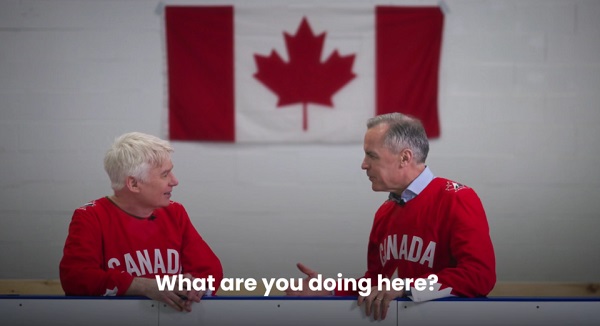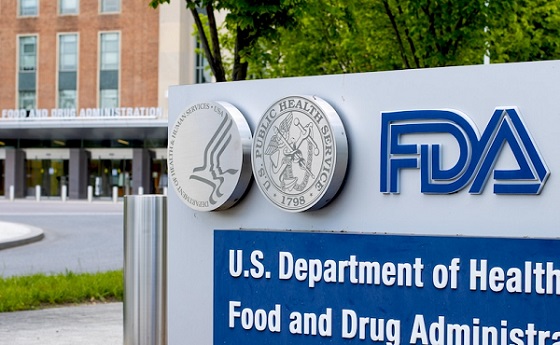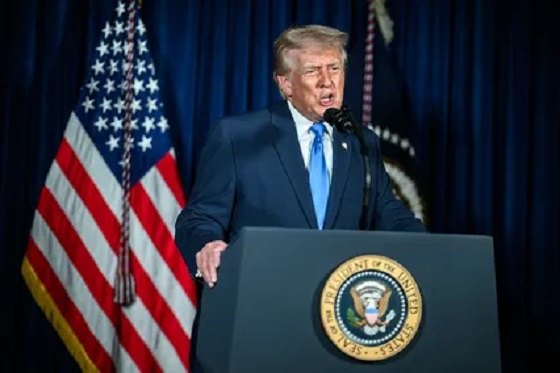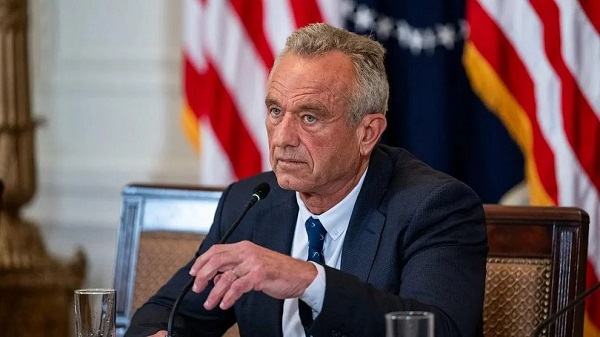Uncategorized
Biden says he never meant to make women feel uncomfortable

WASHINGTON — Former
The episode, recounted by Democrat Lucy Flores , highlighted an aspect of Biden’s persona that has been publicly known for years: the affectionate whispers, hugs and shoulder squeezes he has long doled out to women, often on camera and at high-profile public events. In a moment of national reckoning over sexual harassment and the treatment of women by powerful men, some Democrats said Biden’s actions have taken on a new light.
“It looks different in 2019,” said Maria Cardona, a Democratic strategist. Cardona said that while Biden’s
In a statement on Sunday, Biden said it was never his intention to make women feel discomfort and if he did so, “I will listen respectfully.”
Several women who worked for Biden stepped forward over the weekend to vouch for his character. And Stephanie Carter, the wife of former
“The Joe Biden in my picture is a close friend helping someone get through a big day, for which I will always be grateful,” Carter wrote in a post on the
Flores’ account of the 2014 incident comes at a crucial moment for Biden. He’s been wrestling for months with a final decision on whether to run for president, blowing through several self-imposed deadlines. Advisers are now eyeing an announcement later in April.
But the Democratic primary has sped on without him, with more than a dozen candidates in the race, including a record number of women and minorities. Veterans like Vermont Sen. Bernie Sanders have shown surprising strength, while newer White House hopefuls like California Sen. Kamala Harris and Texan Beto O’Rourke have drawn big crowds and displayed early fundraising prowess.
Biden still leads most early polls, buoyed by broad name recognition and the goodwill he generated during eight years as President Barack Obama’s No. 2. Given his experience and appeal with white working-class voters in Midwestern battleground states, he’s also seen by some Democrats as the best-positioned candidate to defeat President Donald Trump.
Nancy Bobo, an Iowa activist who was among Obama’s earliest supporters in the state, shares that view. She fears the episode with Flores suggests Democrats may try to tear down their most-qualified candidate.
“I can just see what’s coming at him,” Bobo said. “And it’s going to come at him from the Democrats.”
None of Biden’s potential rivals defended him following Flores’ allegations. Massachusetts Sen. Elizabeth Warren said she believed Flores and that Biden “needs to give an answer” about what occurred. New York Sen. Kirsten Gillibrand said, “Lucy Flores felt demeaned, and that is never okay. If
White House
Flores, a former Nevada state representative and the 2014 Democratic nominee for Nevada lieutenant governor, told The Associated Press on Sunday that she had been mulling coming forward for years. She said she approached New York Magazine about publishing her story and that the magazine had fact-checked her piece after she submitted it.
According to Flores, the incident with Biden occurred in 2014 as the two were waiting to take the stage during a rally in Las Vegas.
“I felt two hands on my shoulders. I froze. ‘Why is the
Biden spokesman Bill Russo said the former
The AP tried to contact several advisers and aides from Flores’ 2014 campaign but was unable to obtain any independent verification of her account.
Flores, who endorsed Sanders in the 2016 campaign, said Biden’s team has not been in touch with her since her story was published. She said she would be satisfied if Biden simply acknowledged the discomfort the episode caused her.
Biden has been warned by advisers that his past statements and actions, including his long history of hugging and showing affection to women, would face fresh scrutiny in the 2020 campaign. In some cases, Biden’s policy positions, such as his support for the 1994 crime bill that is blamed for mass incarcerations of minorities, are out of step with a party that has shifted to the left. But at other moments, like when he touts his ability to forge compromises with Republicans, he can appear to be speaking about a political era that many Democrats believe no longer exists.
Karen Finney, a Democratic strategist who worked on Hillary Clinton’s 2016 campaign, said Biden’s team needs to answer a key question before launching a White House bid: “Do they feel confident in their ability to understand this electorate and campaign in 2020, which is already different than 2016?”
Even before Flores made her allegations, some Democrats were wondering whether Biden was meant for this moment. His team was widely panned following reports that they were considering tapping a younger Democrat or a minority like 2018 Georgia gubernatorial candidate Stacey Abrams as a running mate early in the primary in an attempt to counteract questions about Biden’s age.
While Biden’s team denied that he was considering that step, Biden did float the idea to Abrams over a recent lunch, according to a Democrat with knowledge of the discussion. The Democrat was not authorized to discuss the matter publicly and insisted on anonymity.
Democratic strategist Rebecca Katz said that while Flores’ descriptions may feel familiar to those who have watched Biden hug and hold hands with women for years, she put the focus on the women who were on the receiving end of his affections.
“What Lucy Flores so bravely did is say, ‘This is the way he made me feel,'” Katz said. “No one has ever done that before with Joe Biden.”
__
Beaumont reported from Des Moines, Iowa. Associated Press writer Stephen Braun in Washington contributed to this report.
__
Follow Julie Pace at http://twitter.com/jpaceDC and Thomas Beaumont at http://twitter.com/tombeaumont
Julie Pace And Thomas Beaumont, The Associated Press
Uncategorized
Mortgaging Canada’s energy future — the hidden costs of the Carney-Smith pipeline deal


Much of the commentary on the Carney-Smith pipeline Memorandum of Understanding (MOU) has focused on the question of whether or not the proposed pipeline will ever get built.
That’s an important topic, and one that deserves to be examined — whether, as John Robson, of the indispensable Climate Discussion Nexus, predicted, “opposition from the government of British Columbia and aboriginal groups, and the skittishness of the oil industry about investing in a major project in Canada, will kill [the pipeline] dead.”
But I’m going to ask a different question: Would it even be worth building this pipeline on the terms Ottawa is forcing on Alberta? If you squint, the MOU might look like a victory on paper. Ottawa suspends the oil and gas emissions cap, proposes an exemption from the West Coast tanker ban, and lays the groundwork for the construction of one (though only one) million barrels per day pipeline to tidewater.
But in return, Alberta must agree to jack its industrial carbon tax up from $95 to $130 per tonne at a minimum, while committing to tens of billions in carbon capture, utilization, and storage (CCUS) spending, including the $16.5 billion Pathways Alliance megaproject.
Here’s the part none of the project’s boosters seem to want to mention: those concessions will make the production of Canadian hydrocarbon energy significantly more expensive.
As economist Jack Mintz has explained, the industrial carbon tax hike alone adds more than $5 USD per barrel of Canadian crude to marginal production costs — the costs that matter when companies decide whether to invest in new production. Layer on the CCUS requirements and you get another $1.20–$3 per barrel for mining projects and $3.60–$4.80 for steam-assisted operations.
While roughly 62% of the capital cost of carbon capture is to be covered by taxpayers — another problem with the agreement, I might add — the remainder is covered by the industry, and thus, eventually, consumers.
Total damage: somewhere between $6.40 and $10 US per barrel. Perhaps more.
“Ultimately,” the Fraser Institute explains, “this will widen the competitiveness gap between Alberta and many other jurisdictions, such as the United States,” that don’t hamstring their energy producers in this way. Producers in Texas and Oklahoma, not to mention Saudi Arabia, Venezuela, or Russia, aren’t paying a dime in equivalent carbon taxes or mandatory CCUS bills. They’re not so masochistic.
American refiners won’t pay a “low-carbon premium” for Canadian crude. They’ll just buy cheaper oil or ramp up their own production.
In short, a shiny new pipe is worthless if the extra cost makes barrels of our oil so expensive that no one will want them.
And that doesn’t even touch on the problem for the domestic market, where the higher production cost will be passed onto Canadian consumers in the form of higher gas and diesel prices, home heating costs, and an elevated cost of everyday goods, like groceries.
Either way, Canadians lose.
So, concludes Mintz, “The big problem for a new oil pipeline isn’t getting BC or First Nation acceptance. Rather, it’s smothering the industry’s competitiveness by layering on carbon pricing and decarbonization costs that most competing countries don’t charge.” Meanwhile, lurking underneath this whole discussion is the MOU’s ultimate Achilles’ heel: net-zero.
The MOU proudly declares that “Canada and Alberta remain committed to achieving Net-Zero greenhouse gas emissions by 2050.” As Vaclav Smil documented in a recent study of Net-Zero, global fossil-fuel use has risen 55% since the 1997 Kyoto agreement, despite trillions spent on subsidies and regulations. Fossil fuels still supply 82% of the world’s energy.
With these numbers in mind, the idea that Canada can unilaterally decarbonize its largest export industry in 25 years is delusional.
This deal doesn’t secure Canada’s energy future. It mortgages it. We are trading market access for self-inflicted costs that will shrink production, scare off capital, and cut into the profitability of any potential pipeline. Affordable energy, good jobs, and national prosperity shouldn’t require surrendering to net-zero fantasy.If Ottawa were serious about making Canada an energy superpower, it would scrap the anti-resource laws outright, kill the carbon taxes, and let our world-class oil and gas compete on merit. Instead, we’ve been handed a backroom MOU which, for the cost of one pipeline — if that! — guarantees higher costs today and smothers the industry that is the backbone of the Canadian economy.
This MOU isn’t salvation. It’s a prescription for Canadian decline.
Uncategorized
Cost of bureaucracy balloons 80 per cent in 10 years: Public Accounts

The cost of the bureaucracy increased by $6 billion last year, according to newly released numbers in Public Accounts disclosures. The Canadian Taxpayers Federation is calling on Prime Minister Mark Carney to immediately shrink the bureaucracy.
“The Public Accounts show the cost of the federal bureaucracy is out of control,” said Franco Terrazzano, CTF Federal Director. “Tinkering around the edges won’t cut it, Carney needs to take urgent action to shrink the bloated federal bureaucracy.”
The federal bureaucracy cost taxpayers $71.4 billion in 2024-25, according to the Public Accounts. The cost of the federal bureaucracy increased by $6 billion, or more than nine per cent, over the last year.
The federal bureaucracy cost taxpayers $39.6 billion in 2015-16, according to the Public Accounts. That means the cost of the federal bureaucracy increased 80 per cent over the last 10 years. The government added 99,000 extra bureaucrats between 2015-16 and 2024-25.
Half of Canadians say federal services have gotten worse since 2016, despite the massive increase in the federal bureaucracy, according to a Leger poll.
Not only has the size of the bureaucracy increased, the cost of consultants, contractors and outsourcing has increased as well. The government spent $23.1 billion on “professional and special services” last year, according to the Public Accounts. That’s an 11 per cent increase over the previous year. The government’s spending on professional and special services more than doubled since 2015-16.
“Taxpayers should not be paying way more for in-house government bureaucrats and way more for outside help,” Terrazzano said. “Mere promises to find minor savings in the federal bureaucracy won’t fix Canada’s finances.
“Taxpayers need Carney to take urgent action and significantly cut the number of bureaucrats now.”
Table: Cost of bureaucracy and professional and special services, Public Accounts
| Year | Bureaucracy | Professional and special services |
|
$71,369,677,000 |
$23,145,218,000 |
|
|
$65,326,643,000 |
$20,771,477,000 |
|
|
$56,467,851,000 |
$18,591,373,000 |
|
|
$60,676,243,000 |
$17,511,078,000 |
|
|
$52,984,272,000 |
$14,720,455,000 |
|
|
$46,349,166,000 |
$13,334,341,000 |
|
|
$46,131,628,000 |
$12,940,395,000 |
|
|
$45,262,821,000 |
$12,950,619,000 |
|
|
$38,909,594,000 |
$11,910,257,000 |
|
|
$39,616,656,000 |
$11,082,974,000 |
-

 Business2 days ago
Business2 days agoTaxing food is like slapping a surcharge on hunger. It needs to end
-

 Health2 days ago
Health2 days agoFDA warns ‘breast binder’ manufacturers to stop marketing to gender-confused girls
-

 International2 days ago
International2 days ago2025: The Year The Narrative Changed
-

 Business1 day ago
Business1 day agoThere’s No Bias at CBC News, You Say? Well, OK…
-

 Uncategorized18 hours ago
Uncategorized18 hours agoMortgaging Canada’s energy future — the hidden costs of the Carney-Smith pipeline deal
-

 Agriculture2 days ago
Agriculture2 days agoSupply Management Is Making Your Christmas Dinner More Expensive
-

 Daily Caller2 days ago
Daily Caller2 days agoTrump Reportedly Escalates Pressure On Venezuela With Another Oil Tanker Seizure
-

 Health2 days ago
Health2 days agoAll 12 Vaccinated vs. Unvaccinated Studies Found the Same Thing: Unvaccinated Children Are Far Healthier










